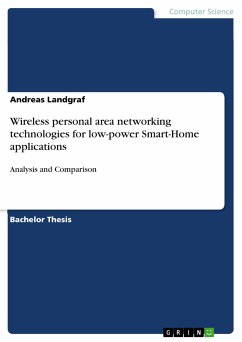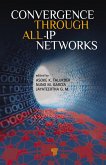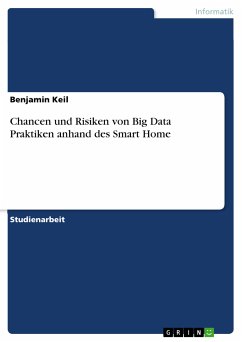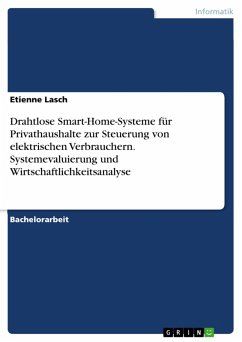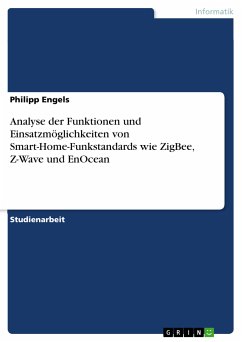Bachelor Thesis from the year 2015 in the subject Computer Science - Internet, New Technologies, grade: 2,00, Campus02 University of Applied Sciences Graz, language: English, abstract: This thesis will introduce the requirements of modern Smart Homes and outline the key wireless networking technologies available for personal networks in Smart Homes. The information is based on data from various sources, such as articles, research papers and books. Finally, this thesis presents a guidance for selecting these networking technologies for energy efficient Smart Home applications. Wireless networking technologies are widely used in communication devices and services in almost every area of daily business. Medical environments, security authorities, and other organizations use them to increase their performance. In particular the Smart Home sector is one of the areas that has been researched extensively. From ecological and technological point of view, the opportunities for new technologies are vast. Therefore, it is important to compare such technologies using ecological parameters. This thesis will give an overview of the wireless network types, ranging from body area to global area networks, and introduces the different Smart Home networks. Furthermore, the major wireless networking technologies of personal area networks, Bluetooth, Bluetooth Smart, Ultra-Wideband, ZigBee, Internet Protocol version 6 over Low-Power Wireless Personal Area Network and Wi-Fi, are discussed in detail. A comparison is made with current chipset manufacturers implementations to create a tabular overview of these technologies and their suitability in Smart Home networks. Results show that every technology has its optimal field of application in a modern Smart Home. However, it can be concluded that further experiments will show more accurate results.
Dieser Download kann aus rechtlichen Gründen nur mit Rechnungsadresse in A, B, BG, CY, CZ, D, DK, EW, E, FIN, F, GR, HR, H, IRL, I, LT, L, LR, M, NL, PL, P, R, S, SLO, SK ausgeliefert werden.

